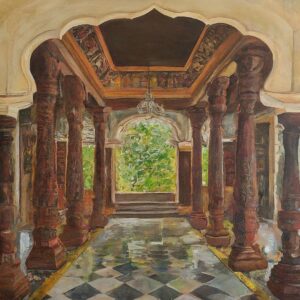The Mansions of Chettinadu: Legacy of a Bygone Era
- History
- November 10, 2024


In the sunkissed heart of Tamil Nadu, the mansions of Chettinadu stand as a monumental legacy of a bygone era. Their grandeur is enchanting if not ghostly. These architectural marvels once belonged to the illustrious Chettiar merchants, whose opulence was legendary.
Flourishing between the 19th and early 20th centuries, the Chettiars amassed wealth as prominent financiers, traders, and bankers to the local kings and British alike. They plied their trade mainly in Southeast Asia. Their mansions were adorned with imported Burmese teak, Italian marble, and Belgian glass, lending voice to their opulence and influence.
Each mansion tells its own story, from the intricately carved wooden pillars to grand courtyards designed to entertain guests and conduct business meetings. These spaces once bustled with the sounds of deals being struck and celebrations filling the halls.

However, their prosperity was not immune to the tides of change. The Great Depression, two world wars, and shifting economies unraveled their financial empire, and many were forced to abandon their ancestral homes.
Today, the mansions of Chettinadu stand quiet, their intricate facades worn by time, yet undeniably majestic. Tourists wander through their vast, empty halls, imagining the lives once lived within. The mansions are a tribute to a unique cultural legacy, standing as both remnants of a golden age and solemn reminders of impermanence. Amid crumbling frescoes and fading colors, the spirit of the Chettiar merchants lingers, proud and resilient, echoing the rise and fall of an extraordinary era.
